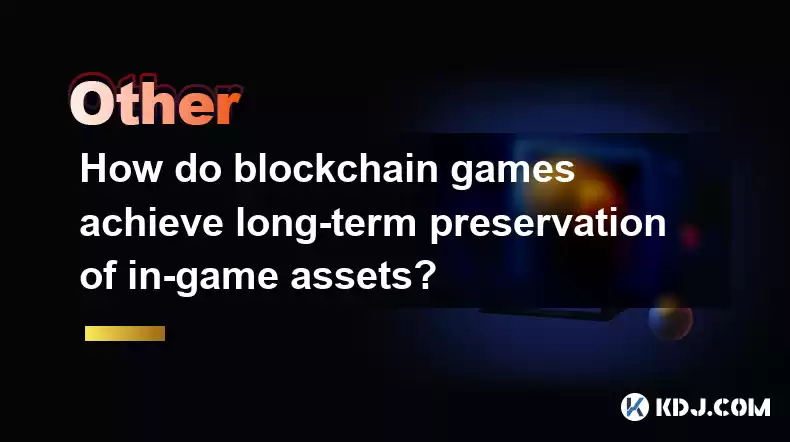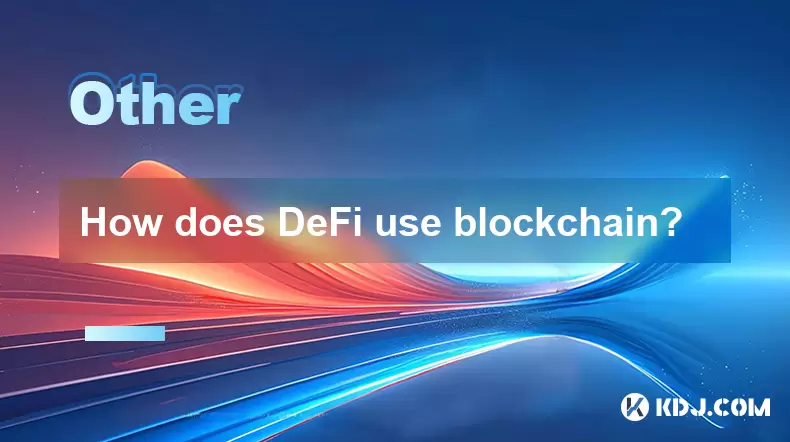-
 Bitcoin
Bitcoin $114400
1.32% -
 Ethereum
Ethereum $3499
2.20% -
 XRP
XRP $2.922
4.26% -
 Tether USDt
Tether USDt $0.0000
0.03% -
 BNB
BNB $752.6
1.53% -
 Solana
Solana $161.8
1.64% -
 USDC
USDC $0.9999
0.01% -
 TRON
TRON $0.3267
1.32% -
 Dogecoin
Dogecoin $0.1991
3.02% -
 Cardano
Cardano $0.7251
3.29% -
 Hyperliquid
Hyperliquid $38.32
3.36% -
 Stellar
Stellar $0.3972
7.58% -
 Sui
Sui $3.437
2.74% -
 Chainlink
Chainlink $16.29
3.65% -
 Bitcoin Cash
Bitcoin Cash $545.3
3.70% -
 Hedera
Hedera $0.2482
7.49% -
 Ethena USDe
Ethena USDe $1.001
0.03% -
 Avalanche
Avalanche $21.40
2.02% -
 Toncoin
Toncoin $3.579
1.56% -
 Litecoin
Litecoin $109.3
2.20% -
 UNUS SED LEO
UNUS SED LEO $8.951
-0.18% -
 Shiba Inu
Shiba Inu $0.00001220
2.75% -
 Polkadot
Polkadot $3.613
2.99% -
 Uniswap
Uniswap $9.173
3.78% -
 Monero
Monero $302.6
2.62% -
 Dai
Dai $0.0000
0.00% -
 Bitget Token
Bitget Token $4.320
1.52% -
 Pepe
Pepe $0.00001048
3.40% -
 Cronos
Cronos $0.1314
4.33% -
 Aave
Aave $259.4
3.54%
How do blockchain games achieve long-term preservation of in-game assets?
Blockchain games use immutable ledgers, smart contracts, decentralized storage, and regular backups to ensure long-term preservation of in-game assets, enhancing player trust and ecosystem integrity.
Apr 15, 2025 at 03:50 am

Blockchain games have revolutionized the gaming industry by introducing the concept of true ownership of in-game assets through the use of blockchain technology. Ensuring the long-term preservation of these assets is crucial for maintaining player trust and the overall integrity of the gaming ecosystem. In this article, we will explore the various methods and technologies blockchain games employ to achieve this goal.
Immutable Ledgers and Smart Contracts
The foundation of long-term asset preservation in blockchain games lies in the use of immutable ledgers and smart contracts. An immutable ledger ensures that once an asset is recorded on the blockchain, it cannot be altered or deleted. This feature is crucial for maintaining the integrity of in-game assets over time.
Smart contracts, on the other hand, automate the rules and transactions related to these assets. They are self-executing contracts with the terms of the agreement directly written into code. By using smart contracts, blockchain games can ensure that the ownership and transfer of assets are managed transparently and securely, without the need for intermediaries.
Decentralized Storage Solutions
To further enhance the preservation of in-game assets, many blockchain games leverage decentralized storage solutions such as InterPlanetary File System (IPFS) and Filecoin. These solutions distribute data across a network of nodes, reducing the risk of data loss due to server failures or centralized control.
- IPFS allows files to be stored and shared in a peer-to-peer network, ensuring that assets are accessible even if individual nodes go offline.
- Filecoin incentivizes users to provide storage space, creating a robust and decentralized storage network.
By storing asset data on these decentralized networks, blockchain games can ensure that players' assets remain accessible and preserved over the long term.
Token Standards and Interoperability
Another critical aspect of asset preservation is the use of token standards such as ERC-721 and ERC-1155. These standards define how non-fungible tokens (NFTs) are created, owned, and transferred on the blockchain. By adhering to these standards, blockchain games can ensure that their assets are compatible with various platforms and wallets, enhancing their longevity and utility.
Interoperability is also key to long-term preservation. By designing assets that can be used across different games and platforms, developers can ensure that these assets remain valuable and relevant over time. This approach not only preserves the assets but also encourages a thriving ecosystem of interconnected games and applications.
Regular Backups and Data Redundancy
To mitigate the risk of data loss, blockchain games implement regular backups and data redundancy. Regular backups ensure that there are multiple copies of the asset data stored in different locations, reducing the risk of losing critical information.
Data redundancy involves storing multiple copies of the same data across different nodes or servers. This approach ensures that even if one node fails, the data remains available on other nodes. By combining regular backups with data redundancy, blockchain games can significantly enhance the long-term preservation of in-game assets.
Community Governance and Decentralized Autonomous Organizations (DAOs)
Involving the community in the governance of the game can also play a vital role in asset preservation. Decentralized Autonomous Organizations (DAOs) allow players to participate in decision-making processes related to the game's development and asset management.
Through DAOs, players can vote on proposals that affect the game's ecosystem, including updates that might impact asset preservation. This community-driven approach ensures that the interests of asset holders are considered, fostering a more resilient and sustainable gaming environment.
Security Measures and Audits
Ensuring the security of in-game assets is paramount for their long-term preservation. Blockchain games employ various security measures to protect against hacks and unauthorized access. These measures include encryption, multi-signature wallets, and regular security audits.
- Encryption protects data both in transit and at rest, ensuring that asset information remains confidential.
- Multi-signature wallets require multiple signatures to authorize transactions, adding an extra layer of security.
- Regular security audits conducted by third-party firms help identify and fix vulnerabilities, ensuring that the game's infrastructure remains secure over time.
By implementing these security measures, blockchain games can safeguard in-game assets against potential threats, thereby enhancing their long-term preservation.
Frequently Asked Questions
Q: Can in-game assets be transferred to different blockchains?
A: Yes, some blockchain games support cross-chain interoperability, allowing assets to be transferred between different blockchains. This is typically achieved through the use of cross-chain bridges or protocols that facilitate the movement of assets across networks.
Q: How do blockchain games handle the loss of private keys?
A: In the event of a lost private key, most blockchain games offer recovery options such as seed phrases or social recovery mechanisms. It's crucial for players to securely store their private keys and recovery phrases to prevent permanent loss of their assets.
Q: Are there any costs associated with maintaining in-game assets on the blockchain?
A: Yes, maintaining in-game assets on the blockchain can incur costs such as gas fees for transactions and storage fees for decentralized storage solutions. These costs vary depending on the blockchain and the specific game's requirements.
Q: Can blockchain games ensure the preservation of assets if the game shuts down?
A: While blockchain games can ensure the immutability of assets on the blockchain, the continued utility and accessibility of these assets may depend on the game's infrastructure. Some games may have plans in place for asset preservation in the event of a shutdown, such as migrating assets to other platforms or supporting community-driven continuations.
Disclaimer:info@kdj.com
The information provided is not trading advice. kdj.com does not assume any responsibility for any investments made based on the information provided in this article. Cryptocurrencies are highly volatile and it is highly recommended that you invest with caution after thorough research!
If you believe that the content used on this website infringes your copyright, please contact us immediately (info@kdj.com) and we will delete it promptly.
- Bitcoin Price Wobbles: Options Analysis Points to Bullish Undercurrent Despite Dip
- 2025-08-04 04:30:12
- Ark Invest, Coinbase, and Bitcoin: Decoding the Crypto Investment Landscape in NYC
- 2025-08-04 04:30:12
- Ruvi AI: CoinMarketCap Listing and Audited Token Status Spark Investor Frenzy
- 2025-08-04 05:30:12
- BlockDAG, Cryptos 2025, and Live Exchange: What's Hot and What's Not
- 2025-08-04 05:50:11
- BlockDAG, TON, and Dogecoin: Riding the Crypto Wave with Innovation and Hype
- 2025-08-04 05:35:12
- LILPEPE, Cardano, and Shiba Inu: The 2025 Crypto Landscape
- 2025-08-04 04:50:12
Related knowledge

What is the difference between on-chain and off-chain transactions?
Aug 02,2025 at 04:22pm
Understanding On-Chain TransactionsOn-chain transactions refer to digital asset transfers that are recorded directly on a blockchain ledger. These tra...

What is a node's role in a blockchain network?
Aug 03,2025 at 03:16pm
Understanding the Function of a Node in a Blockchain NetworkA node is a fundamental component of any blockchain network, acting as a participant that ...

How are transactions verified on a blockchain?
Aug 04,2025 at 12:35am
Understanding the Role of Nodes in Transaction VerificationIn a blockchain network, nodes are fundamental components responsible for maintaining the i...

What is the double-spending problem and how does blockchain prevent it?
Aug 02,2025 at 01:07pm
Understanding the Double-Spending ProblemThe double-spending problem is a fundamental challenge in digital currency systems where the same digital tok...

What is the difference between a blockchain and a database?
Aug 01,2025 at 09:36pm
Understanding the Core Structure of a BlockchainA blockchain is a decentralized digital ledger that records data in a series of immutable blocks linke...

How does DeFi use blockchain?
Aug 03,2025 at 11:15pm
Understanding the Role of Blockchain in DeFiDecentralized Finance (DeFi) relies fundamentally on blockchain technology to operate without intermediari...

What is the difference between on-chain and off-chain transactions?
Aug 02,2025 at 04:22pm
Understanding On-Chain TransactionsOn-chain transactions refer to digital asset transfers that are recorded directly on a blockchain ledger. These tra...

What is a node's role in a blockchain network?
Aug 03,2025 at 03:16pm
Understanding the Function of a Node in a Blockchain NetworkA node is a fundamental component of any blockchain network, acting as a participant that ...

How are transactions verified on a blockchain?
Aug 04,2025 at 12:35am
Understanding the Role of Nodes in Transaction VerificationIn a blockchain network, nodes are fundamental components responsible for maintaining the i...

What is the double-spending problem and how does blockchain prevent it?
Aug 02,2025 at 01:07pm
Understanding the Double-Spending ProblemThe double-spending problem is a fundamental challenge in digital currency systems where the same digital tok...

What is the difference between a blockchain and a database?
Aug 01,2025 at 09:36pm
Understanding the Core Structure of a BlockchainA blockchain is a decentralized digital ledger that records data in a series of immutable blocks linke...

How does DeFi use blockchain?
Aug 03,2025 at 11:15pm
Understanding the Role of Blockchain in DeFiDecentralized Finance (DeFi) relies fundamentally on blockchain technology to operate without intermediari...
See all articles

























































































